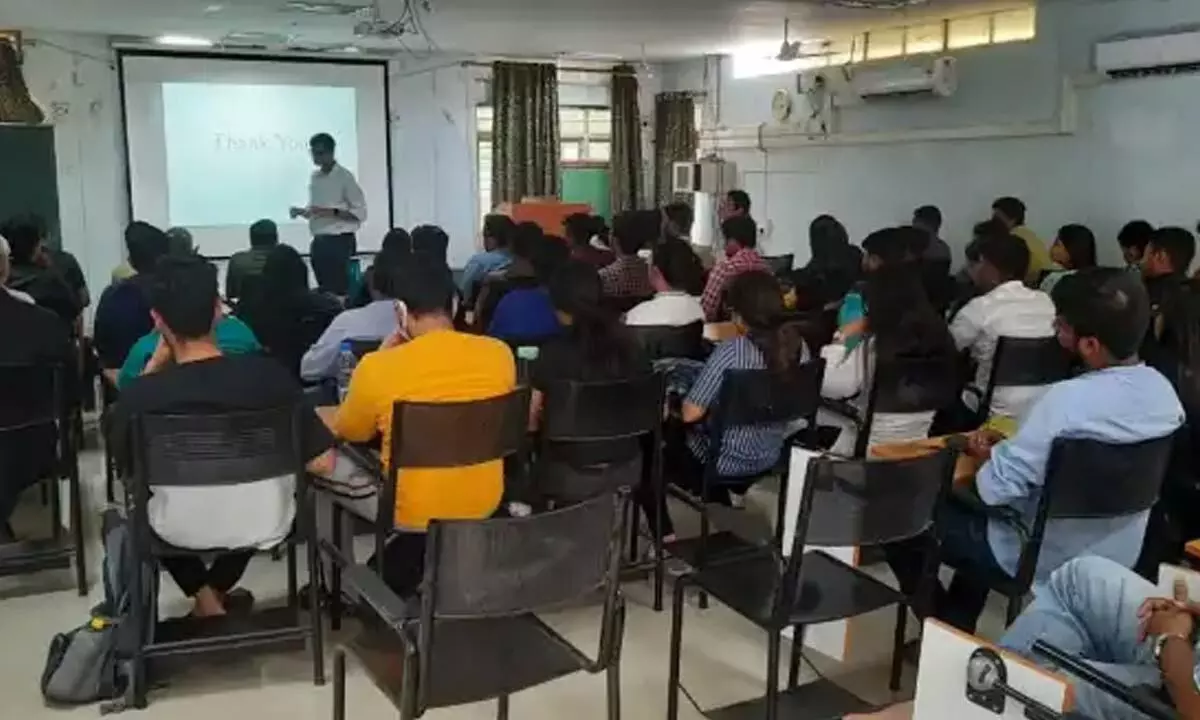Live
- INS Kuthar makes maiden visit to Gopalpur Port
- PM praises city-based NGO for promoting libraries
- Odisha police rescue ‘trafficked’ Bangla girl
- iPhone 16 Plus Now at Rs. 2,000 Discount on Amazon – Get It Today
- How Technology is Shaping Global Connectivity and Enhancing Security
- Dy CM directs officials to collect all critical info on caste census
- Naga Chaitanya Opens Up About His Wedding Plans with Sobhita Dhulipala
- ‘NC24’ First Look Poster: Naga Chaitanya’s Next Promises Thrills and Mythology
- Rumors Heat Up as Vijay and Rashmika Enjoy a Cozy Meal Together
- 67th annual day celebrations held at IRISET
Just In
Evolution of the Distribution of Plant Level Productivity


Evolution of the Distribution of Plant Level Productivity
The School of Economics, University of Hyderabad (UoH), successfully organises a special public lecture by Professor Partha Sarathi Chatterjee from Shiv Nadar University, Delhi-NCR
Prof. Chatterjee spoke on the topic 'Evolution of the Distribution of Plant Level Productivity' in the context of Indian manufacturing units over a long period of time using the annual survey of industries data. In his lecture, Prof. Chaterjee said that there are several papers that look at how the mean or the standard deviation of productivity has changed over time, but in his work, he has examined how the whole distribution has changed over time. He presented that much of the change happens at the middle of the distribution as per the available data.
He also found that a significantly large number of entries and exits of plants happen at the middle of the distribution. Moreover, he found no significant difference in productivity of plants that enter or exit or continue operations. This is contrary to standard theory which suggests that plants with productivity below some threshold should exit, while entering plants are expected to have productivity above a threshold. Using the dynamic Olley-Pakes decomposition, Prof. Chatterjee discussed that the contributions to the change in aggregate productivity from entry, exit and surviving plants are indistinguishable. He asked the audience - what explains these observations? One possibility is the skill distribution of the labor force.
He found that the share of high skilled workers (at least college degree and more) is low compared to those who have some schooling, but not college education. This could lead to more imitation than innovation, which in turn can explain the observations mentioned above. Prof. Chatterjee explained the building of a dynamic model of entry, exit, imitation, innovation and obsolescence to demonstrate this. He presented that education level data from NSSO reflects that high skilled labour, required for innovation, is much lower compared to lower skilled labour. This results in lower innovation compared to imitation. Thus, shortage of skilled workforce can lead to misallocation of resources.
Prof. Partha Sarathi Chatterjee is currently a Professor of Economics and Head of the Department of Economics at Shiv Nadar University, Delhi-NCR. He holds a PhD degree in Economics from the University of Minnesota, USA and MPhil degree in Economics from IGIDR Mumbai. Previously, Prof Chatterjee was a faculty member at NUS Business School, National University of Singapore; and Faculty of Management Studies, University of Delhi. Prof Chatterjee's research and teaching interests are broadly in macroeconomics, international economics, and issues related to emerging economies. He also has a keen interest in issues related to higher education, particularly in India. He has established the BSc (Research) and MSc in Economics, as one of the best programmes in the country. He has recently launched a multidisciplinary program, BSc (Research) in Economics and Finance.

© 2024 Hyderabad Media House Limited/The Hans India. All rights reserved. Powered by hocalwire.com






